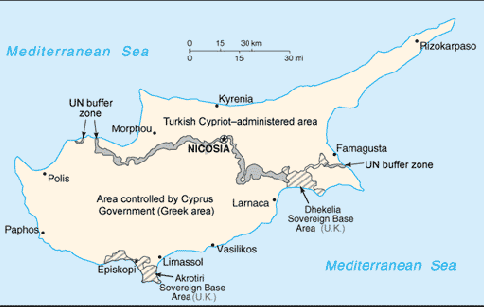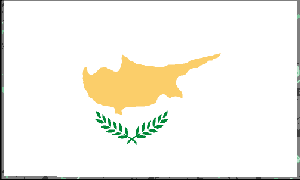
|
Cyprus
Background:
The Greek Cypriot majority approved Independence from the UK in 1960 with
constitutional guarantees to the Turkish Cypriot minority. In 1974, a
Greek-sponsored attempt to seize the government was met by military
intervention from Turkey, which soon controlled almost 40% of the island. In
1983, the Turkish-held area declared itself the "Turkish Republic of Northern
Cyprus," but it is recognized only by Turkey.
|

|
People:
Population: 767,314.
Ethnic groups: Greek 85.2%, Turkish 11.6%, other 3.2%.
Religions: Greek Orthodox 78%, Muslim 18%, Maronite, Armenian Apostolic, and
other 4%.
Languages: Greek, Turkish, English.
|
|
Economy overview:
The division of the country affects economic affairs. The Greek Cypriot economy
is prosperous but highly susceptible to external shocks. Erratic growth rates
in the 1990s reflect the economy's vulnerability to swings in tourist arrivals,
caused by political instability in the region and fluctuations in economic
conditions in Western Europe. Economic policy is focused on meeting the
criteria for admission to the EU. As in the Turkish sector, water shortages are
a perennial problem; a few desalination plants are now online. The Turkish
Cypriot economy has less than one-half the per capita GDP of the south.
|
|